






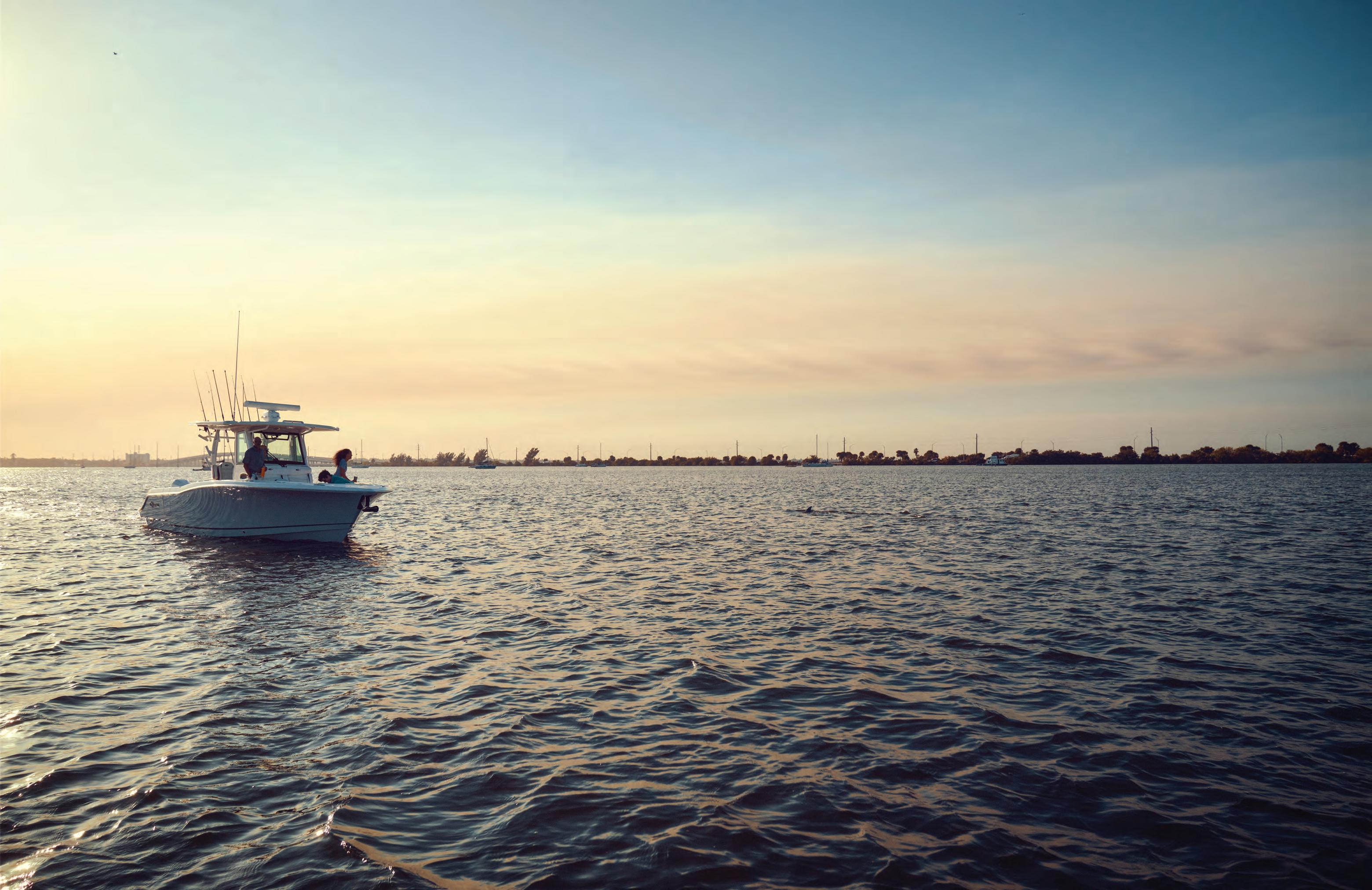




















Embarking on the open water is an exhilarating experience, flled with the promise of adventure and relaxation. Whether you’re a seasoned sailor or a weekend cruiser, protecting your vessel with proper insurance is not just a choice—it’s a necessity. Explore the reasons why every boat owner should prioritize boat insurance for a worry-free voyage.
The open water can be unpredictable, with unexpected storms, collisions, or other potential accidents. Boat insurance can give you fnancial protection if there is damage to your vessel, providing coverage for repairs or replacement.
Accidents on the water can result in damage to other boats, docks, or even injuries to passengers. Boat insurance offers liability coverage, which can pay for damages or injuries you’re liable for while boating, up to specifed limits, and lawsuit costs if you’re sued. This includes damage you cause to another watercraft or if someone on or near your boat is injured and you’re found to be legally responsible.
Unfortunately, boat theft and vandalism are realities that boat owners face. Boat insurance has comprehensive and collision coverage that can protect you against events outside of your control, including theft and vandalism.
Accidents on the water may lead to injuries for you or your passengers. Boat insurance offers a range of optional medical payments coverage limits, helping to cover medical expenses if you are in an accident or someone is hurt on your boat, regardless of fault.
If you fnanced the purchase of your boat, most lenders require insurance coverage to protect their investment. Having boat insurance not only fulflls these requirements but also gives you peace of mind knowing that your fnancial interests are safeguarded.


Some water municipalities and marinas may require proof of insurance for docking or accessing certain areas. Boat insurance allows you the fexibility to explore different destinations without worrying about entry restrictions.
Emergency towing and assistance
Progressive boat insurance can include optional Sign & Glide® On-Water Towing coverage. If your boat is disabled or breaks down on the water, Sign & Glide® pays for on-water towing, jump starts, soft un-groundings, and fuel delivery.
Wreckage removal
If your boat sinks, Progressive boat insurance will cover the cost of removing your boat from the water (if removal is legally required).
Investing in boat insurance is not just about protecting a valuable asset; it’s about safeguarding the memories, experiences, and joy that come with your on-water adventures. Don’t let unforeseen circumstances disrupt your journey—navigate with confdence, knowing that Progressive boat insurance has you covered. Ensure a smooth and worry-free voyage, because when it comes to your boat, peace of mind is the ultimate luxury.
Scan to get a quote in as little as 4 minutes
learn more.





















May is one of my favorite months for o!shore shing, as the shing seasons coincide with good weather. Being spared from the beginning of hurricane season until next month, right now is the most reliable time to get nice weather days to make the trek to deeper waters.
Mahi season has begun to be more consistent, making the trips o!shore more exciting and worthwhile. When making the long drive to the humps for black n tuna, or the sword sh ledges, it’s always a plus to know that you have opportunities to catch mahi on the way there and back. Staying alert for weedlines, diving birds and oating debris makes the trip seem like less of a chore, and keeps that sherman’s optimism alive for more of the venture, knowing you’re still on the hunt nearly the whole way back to the dock.
With the prevalence of mahi, tuna, queen snapper and sword sh in our deepwater shery, May 1st marks the opening of grouper season here in e Florida Keys, providing additional catching opportunities for both nearshore and o!shore adventures. We also welcome the opening of tile sh this month.
For those with an electric reel setup in their arsenal, this is a great month to get out there and scout for new deep-dropping locations. With snowy grouper and yellowedge grouper found peppered throughout the area, test dropping on new found spots can be a fun addition to mahi shing. As you run aimlessly o!shore looking for
signs of dolphin sh, you may notice you run over a ledge or depth variation. Anything that looks shy a%er about 500’ could be your next honeyhole.
By Capt. Quinlyn Haddon

If this is a new area especially, use a variety of baits on your 5-hook deepdrop rig to ensure your best chances of surveying the location. Squid is always a good choice o!shore, with many species unable to resist its potent aroma, but chunks of sh should be included to entice a grouper bite. With bait sizes matching hook sizes, its a good idea to make your own rigs with di!erent sized hooks if you’re unsure of the species that might be available at a new place. A x larger hooks near the bottom of the rig for grouper baits, and smaller hooks near the top with squid for tile sh.
If o!shore isn’t your thing, there are plenty of grouper on the reef and wrecks nearshore this time of year as well. However, a%er releasing these sandwich providers since their closing January 1st, every local sherman in town will be hitting the wrecks hard for the recaptures now that season is open. Before they face all this pressure from being targeted nearshore, particularly on publicly known wrecks, it’s a good time to put some skin in the nearshore grouper game.
A%er a short closure for the month of April, amberjack has also opened again this month.

ese sh are easy to nd, and add some nice backbreaking action to the grouper hunt.
Whatever your avor of shing is, e Florida Keys has you covered this month. With the anticipated opening of grouper season at the beginning of May, and schools closing for summer break nearing the end, it’s a good idea to get booked for a charter before you arrive on your Keys vacation.
Give us a call at Sweet E’nuf Charters to get tight.
Capt. Quinlyn Haddon guides with Sweet E’Nuf Charters out of Marathon, e Florida Keys. (504) 920-6342. www.captainquinlyn.com; IG: @captainquinlyn
Whether you’re chasing trophy fish or charting your next offshore course, your time on the water deserves the best in navigation and marine technology. Defender brings you UNBEATABLE PRICES and EXPERT SUPPORT on Lowrance and Simrad electronics—trusted by professionals and weekend warriors alike.


and navigation that keeps you locked on target.

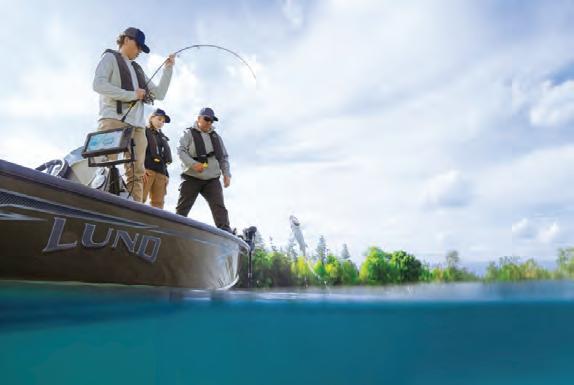

No ofense to those nifty little knives that the Swiss pack a kitchen into, but sometimes it takes a big blade to get the job done. Tat was the case three years ago when I found myself in the jungles of Argentina.
I’d heard a tale about lost Inca gold and was on the hunt for clues. Among other things, the Inca were known for their extensive road system that ran at least 25,000 miles along South America’s eastern side. But the clue I was looking for was down a long-abandoned road overtaken by jungle.

Join the over 492,000 sharp people who own Stauer knives
That’s when my Pathfinder Blade came to the rescue. Constructed of high-quality 420 surgical stainless steel and with a total length of 16 inches, this full-tang knife made quick work of the jungle brush. And with its rugged handle of genuine, natural white bone that’s been hand-carved and torched with an iconic design, I didn’t lose my grip. Rounded off by brass spacers, handguards, a brown pakkawood handle, and hand engravings on the blade’s spine, this baby is all you could ever handle in jungle brush.

Upon reaching a stone wall hidden by the jungle, I snapped my knife back into its tooled genuine leather sheath and read the markings the Incas had left long ago. It was time to travel north for the next part of my adventure.
To make your next adventure even better, we’re including a pair of Stauer Flyboy Optics® Sunglasses— a $99 value—FREE with your purchase of the Pathfinder Blade. Lightweight, and ready to go wherever you do, these sunglasses are the perfect companion to help you stay sharp on the trail.

Flyboy Optics® Sunglasses a $99value with your purchase of the Pathfinder Blade




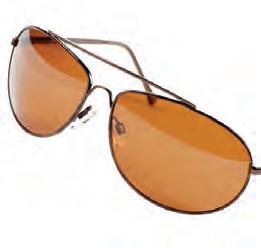




What Stauer Clients Are Saying About Our Knives
“This knife is beautiful!” — J., La Crescent, MN Knife Specifcations:
• 16" total length.
• High-quality 420 surgical stainless steel blade
• Full-tang construction. Handle of genuine, natural white bone that’s been hand-carved and torched

• Brass spacers and handguards, brown pakkawood handle, and hand engravings on the blade spine
• Leather sheath included Pathfinder Blade

$349 $99* + S&P Save $250
California residents please call 1-800-333-2045 regarding Proposition 65 regulations before purchasing this product.
*Special price only for customers using the offer code.






By Riley Love


nly in the dreams of shermen does this occur. A wondrous game sh pursued across ve countries not only awaits but the biggest, baddest, best of them lay for you in a single place.
e Salminus Brasiliensis is certainly not related to salmon, but is of the order Characiformes which includes many species— notably vampire-fanged payara and modern cinema star piranha in South America and tiger sh in Africa. Redundantly named the golden dorado (dorado means “golden” in Spanish), it’s immensely powerful, acrobatic—and magni cently beautiful.
e Rio Uruguay (indigenous Guarani interpretation “bird river”), with the northern border of Argentina and southern of Uruguay, sports a massive hydroelectric dam, the “El Salto Grande.” Stunned eels and bait sh ow through the locks in highly oxygenated water to the waiting predators. Permits are required by the dual operators on the Argentinian and Uruguay sides of the river to sh within 1,000 meters from the dam. Fishing is rigidly structured into slots of three hours quartered per weekdays per group of two or three anglers in two boats in this “Zona.” e Argentinians lost their permits recently and our two cra% had the entire area to ourselves. Downstream, twenty other boats oated outside the zone a kilometer away, prohibited from approaching nearer. My inner voice asked, “How o%en does this happen to me?”

ere are a lot of places to sh for golden dorado in Argentina, Bolivia, Paraguay, Uruguay and Brazil. One would note that the world record is a bit cloudy; there is a 70 lb. specimen claimed in 1970 but without a veri cation or a photo. To re ect on the quality of this shery, the current IGFA record is just over 55 lbs. and taken at La Zona. Our group landed numerous sh into the mid-40 lb. range, within 80% of the documented record. In contrast, the renowned, luxurious golden dorado destination, Pira Lodge, gets about one sh over 30 lbs. annually. shermen do well here. Locals target carp-like boga both for live bait and food. Using large topwater poppers, Rapala style diving minnows and handmade jigs, we hit rocky structure and fastmoving torrents. e dorado were exceedingly sensitive to water levels and ow being released from the dam. When it happened and their buttons were pushed, it was double digit trophies in each time slot. Multiple hookups were common.

Fishing teaches us lessons about life. Whether love, war or business, if you want success you need multiple opportunities. Even with shoulder- wrenching, reel-screaming strikes and Hank Aaron grade roundhouse hooksets, over half of what seemed like solid hookups would suddenly vanish from the transaction. It’s very much like trying to land large toothy- jawed payara. e modus operandi of these golden hulks revealed that even extra strong hooks were straightened, sometimes pulled from the lures; 65 lb. braid and wire leaders were broken. But some just “Houdinied” away, still waiting for you to come, instead of only dreaming.
Justi Campa of Fly Fishing Patagonia assisted with our planning. Reach them by emailing jcampa@ y shingpatagonia.com or visit www. y shingpatagonia.com.

Riley Love is a physician and author with homes in Kentucky and Key Largo, Fla. He has penned dozens of articles on international sport shing and a host of screenplays. He is a member of the International Game Fish Association, e Bill sh Foundation and the Outdoor Writers Association of America. Contact him at 270-816-4423, rjhclove@gmail.com or visit his website: rileylove.com.




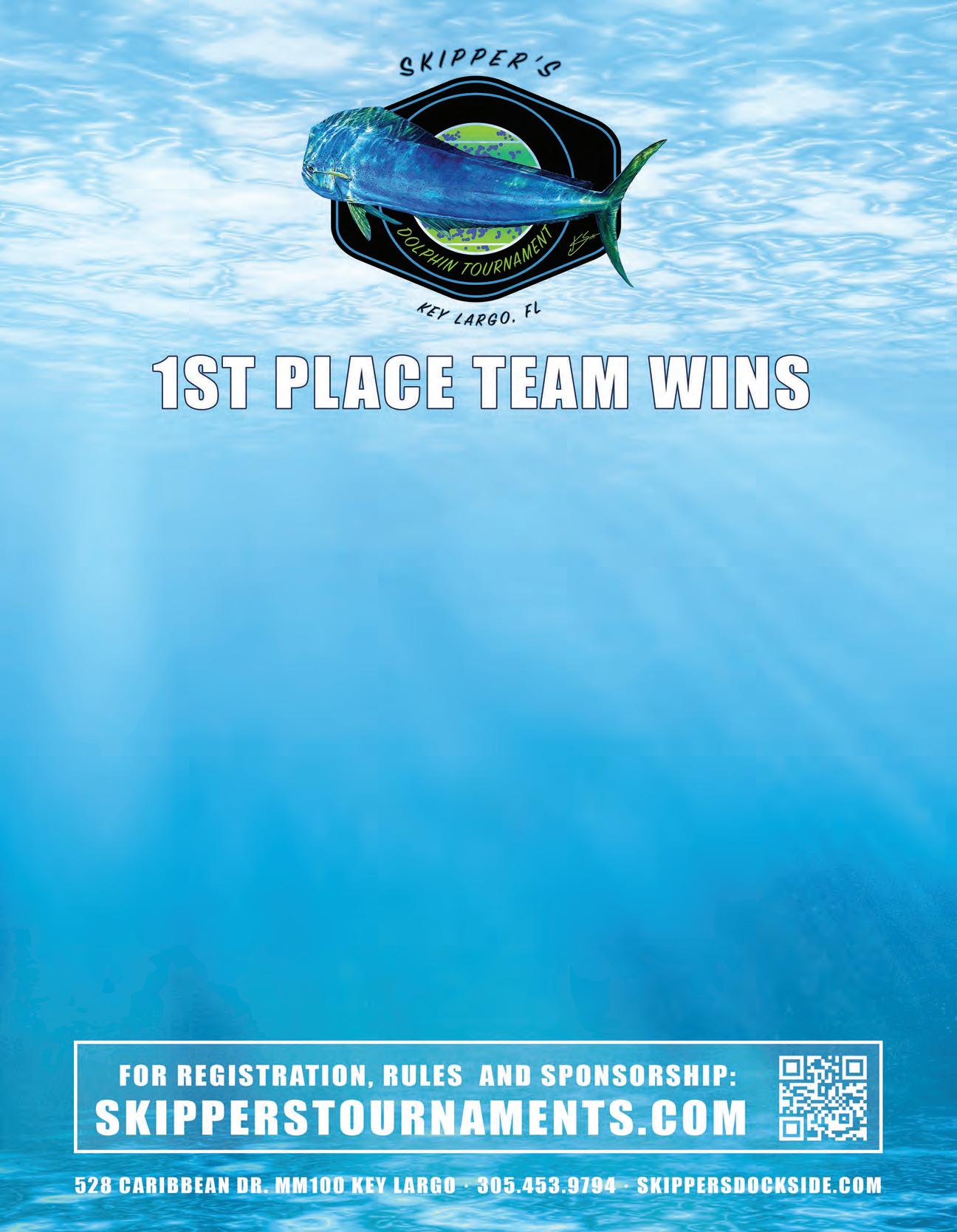


By Joe Woody
I’ve been giving entirely too much thought to a social media post I read last month. Why? I don’t know.
The premise of the post was fairly benign, but its conclusions have done nothing but set off little back and forth battles between the voices in my head. Remember the movie “Twelve Angry Men”? It’s kind of like that.
One of my voices will stand up, clear his throat and with the tenor of a smooth southern lawyer, set forth reason after reason why the author of this inflammatory post has lost his marbles. His voice is so calm, and his delivery so rehearsed that even the most head-strong of the other voices begin to turn to his convictions.
Then when the argument is almost resolved, another more verbose and slightly inebriated troubler maker will jump up on the table, a hootin’ and hollerin’, banging his fist and kicking stuff, screaming at everyone that all their conclusions are completely cockamamie horse-crap.
What in the world could be causing me this much consternation?
Can you believe somebody actually tried to name the top ten trout streams in North Carolina? I mean...what the heck? There are far too many variables to go into that algorithm.
Here are just a few categories that could sway the list from person to person: Experience

Physical Endurance
Rod Selection
Bait Preference
Targeted Fish
Stream Rules
Stream Size
Location
ETC, ETC, ETC

I know many people who would never list their favorite streams, if for no other reason than to keep people away from said stream. I’m sure there are also more devious fishermen out there who would name a stream because they know it’s their main competitor’s favorite waterway, thus ruining the spot for their lifelong antagonist.
There are those fishermen whose favorite streams are blue lines on a map and have no names other than the names they and their buddies have given to it. I’ll give you an example…”Camp Coon Dog”. Just ask Ben Bailey. He knows where it is.
There is just too much water in our mountains to narrow a list down to simply the “ten best streams.” Yes, there are the obvious ones—Nantahala, Hiawassee, The Tuck, Davidson, Watauga, New, and on and on. But just by naming those, my inner voices have kicked back into full argument mode. Perhaps we should make a list of our top 100 streams…would that stop the voices in my head? Probably not...Great Smoky Mountains National Park alone has 800 miles of viable trout streams! Add to that the Pisgah National Forest and Nantahala National Forest...well, you get the picture. Most of my favorite streams are sentimental. They’re my favorite places to go simply because of the memories I’ve made on their banks with the people I love. Some are incredibly hard to fish. Some are stocked streams where you can literally step on the trout as you walk up stream. Some have ridiculously hard trails leading to them, while others are roadside. Some are tiny creeks you can jump over. Others must be fished from a drift boat. What really matters is making the commitment to spend time in different types of streams until you find the water that’s right in the slot of what makes you happy. Of course, that’s when you’re liable to make a list of your favorite streams, causing my inner voices to resort to fisticuffs.
By the way…here are the top five you should visit to make my life-long nemesis mad enough to spit nails:
Davidson River
Tuckaseegee River
Watauga River
Laurel River
Green River
But, by all means, trust me and don’t waste your time on Cataloochee Creek. There are no fish there and its ugly.
Stable Rocks, JW
Joe Woody is Co-Publisher of The Angler Magazine Great Smoky Mountains with his wife Debra. He is an Army Veteran and a self proclaimed “Adventure Angler”. You can usually find him wandering around Western North Carolina telling fishing lies. He is also a baseball nut and a crazy FCS Football fan. He has a Bigfoot magnet on the back of his truck.

By James Mc Manus
May has always been one of the best all-around months for all our finned friends. There are still crappie on the banks, spotted bass are going crazy feeding, stripers are bunched up under birds, it’s truly a smorgasbord for mixed bag days. The best part is the return of fish to the shallows and near shore where every kind of bait can be used.
Top water is one of my favorites and is pretty useless unless fish are holding fifteen or twenty feet or less and if they aren’t on the bank they usually show themselves chasing bait in open water. If you fish a lake with gulls always check around them even if you don’t see them working and if they seem to be on loons fish can be close, just down for the moment. If they are cruising they are probably following what’s happening down
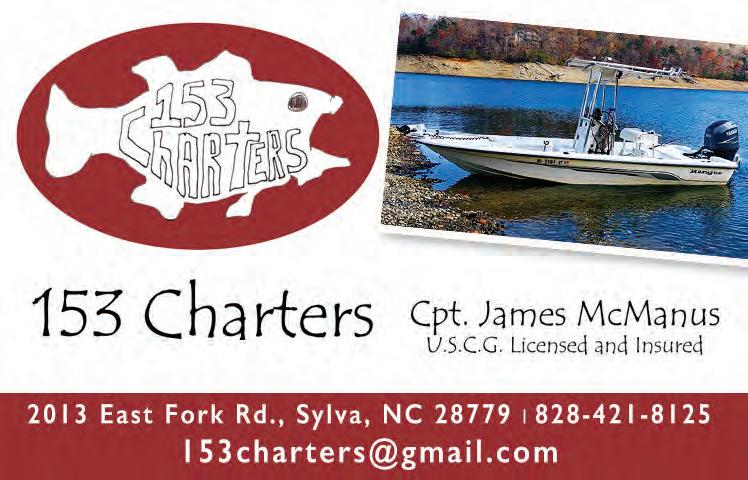
below.

This is one time of the year when you can just start working down a bank and never have to crank the big motor, although any slack areas can be eliminated fairly quickly based on depth, clarity, wind or cover. Simply head down to a similar area that looks like the last good place. Keep several rods rigged with different baits, even active fish have preferences, and sometimes it’s a very minor difference, color, shape or depth change can make a big difference in how successful you are.
Our mountain lakes are just now reaching full pool so it may be necessary to skip ones that are still filling as there will be lots of floating debris so if you fish them be extra attentive while heading down lake. We do a lot of trolling and on some lakes that has to wait til they fill and then drop the level a foot or two so the debris stays on the bank.
If your lake is clear now is a good time to troll shallow plugs as close to shore with side planers as you can get. At the same time you can hit the deep side with lead line or dipsy divers on planer boards, spots especially can be all over the water column.
Enjoy this prime time, not too windy, hot or cold but just right and be careful and take some younguns, they will be thrilled to catch supper for the family. Thank the Lord for our wonderful lakes.
Later, Capt. James
Capt. James McManus owns 153 Charters. Give him a call for a great day on the water at (828) 421-8125


By Ronnie Parris
Hey folks I hope you are all well an that warmer days are ahead. I was looking through photos today an the thought hit me what makes a trip successful Is it the big cooler of fillets you bring home. Don’t get me wrong I love eating these mountain fish as good as anyone but that’s not it. Is it the species you catch or the size. I just don’t think so. Now it’s great to go out an catch a good mess of your target species. An it’s great when you manage a trophy fish that you might even want to put on your wall But in my opinion it’s the people you share

Fishing Guides – Ronnie
We o er both full and half day trips with the most competitive rates available. All tackle and supplies you will need while you are on your trip is covered by our listed price.

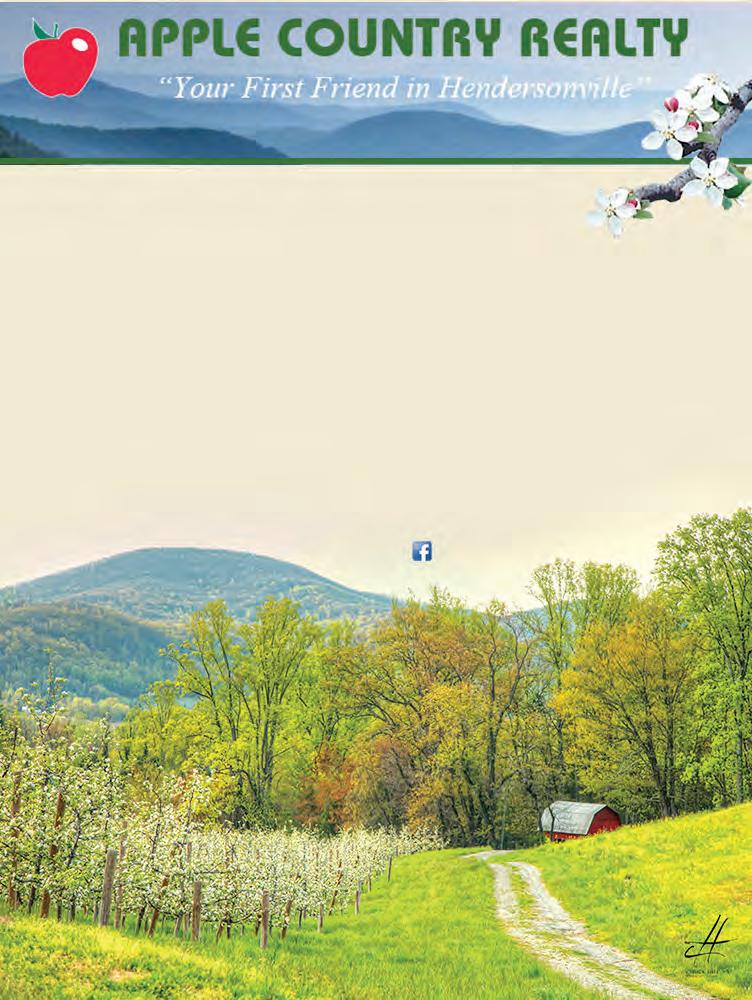

the experience with that truly make it successful. I have had days where it’s just been me an a buddy out on the water an just had a blast fishing an swapping stories. Some of my favorite trips have been when my wife joined me for a day on the water. Now that I have grandkids a successful trip has taken on a whole different meaning. Watching them learn an seeing the excitement in their faces really melts my heart. This past summer I was able to take my mom and dad an both gran sons out for some bluegill action an it was epic. The laughs an giggles were memories for years to come. Hopefully this cold weather is about to wind down an I can get my little buddies back out on the boat Be safe an as always take a kid fishing.
and head

By Scott Norton
It is that time of the year again. The water temperatures are rising and bass are hungry. Bass have one thing on their mind and that is the drive to spawn.
Before the spawn, bass have to feed up for energy and energy storage. Once the spawn happens, the desire to feed goes away for a period of time. The males will protect the fry and will not feed but they will bite protecting them. The females will back out and recover for a period of time but will start to feed again once they have recovered.
There are 3 seasons in the spawn and that is prespawn, spawn, and post spawn. Knowing what part you are in will tell you what and where you will fish. Everything changes in each stage, so make sure you plan accordingly.
In the pre-spawn you will be finding bass in the deep and in the shallows. They will be moving in to feed and spawn so you will have waves of bass at different times. In the spawn season you will be fishing with lures you can run through those beds. You will have to slow down and be very careful not to spook bass on their beds. The trick is to catch the male and keep it in your live well long enough to catch the female. In the post-spawn stage, bass will be in a funk while some recover and others are protecting the fry. If you’re not catching anything at this time, use a bluegill or crawfish bait where the fry will be to catch those guardians.

When it comes to baits, you can use those bold colors this time of year since the bass are not pressured yet. The color red can be amazing at this time since they are looking for iodine to break loose those egg sacks. Some anglers will use bright color lures so they can see when a fish bites the bait. What they are looking for is the color to disappear. When the color is gone it means it is in the mouth of a bass. During this time period they are not looking to eat the bait so color does not matter. Bright colors will only be used as an indicator.
When bass move up shallow, this is a good time of year for those who fish from the banks. This is where you will have the advantage over the bass boats. Sneaking up on those bass on their beds is a huge advantage from shore. Bass will know if a boat is nearby and will be aware of it. If you are fishing from either boat or shore you have to use the art of stealth ,which includes wearing clothing that blends into your surrounding and controlling the shadows coming off of you. A good pair of polarized sunglasses are a must to locate beds with bass and when to swing on bass that has the bait in their mouth.
Have fun and enjoy this season.
Scott Norton is a Western North Carolina native. Born in Asheville, N.C., he is a long-time hunter, angler and weekend warrior.
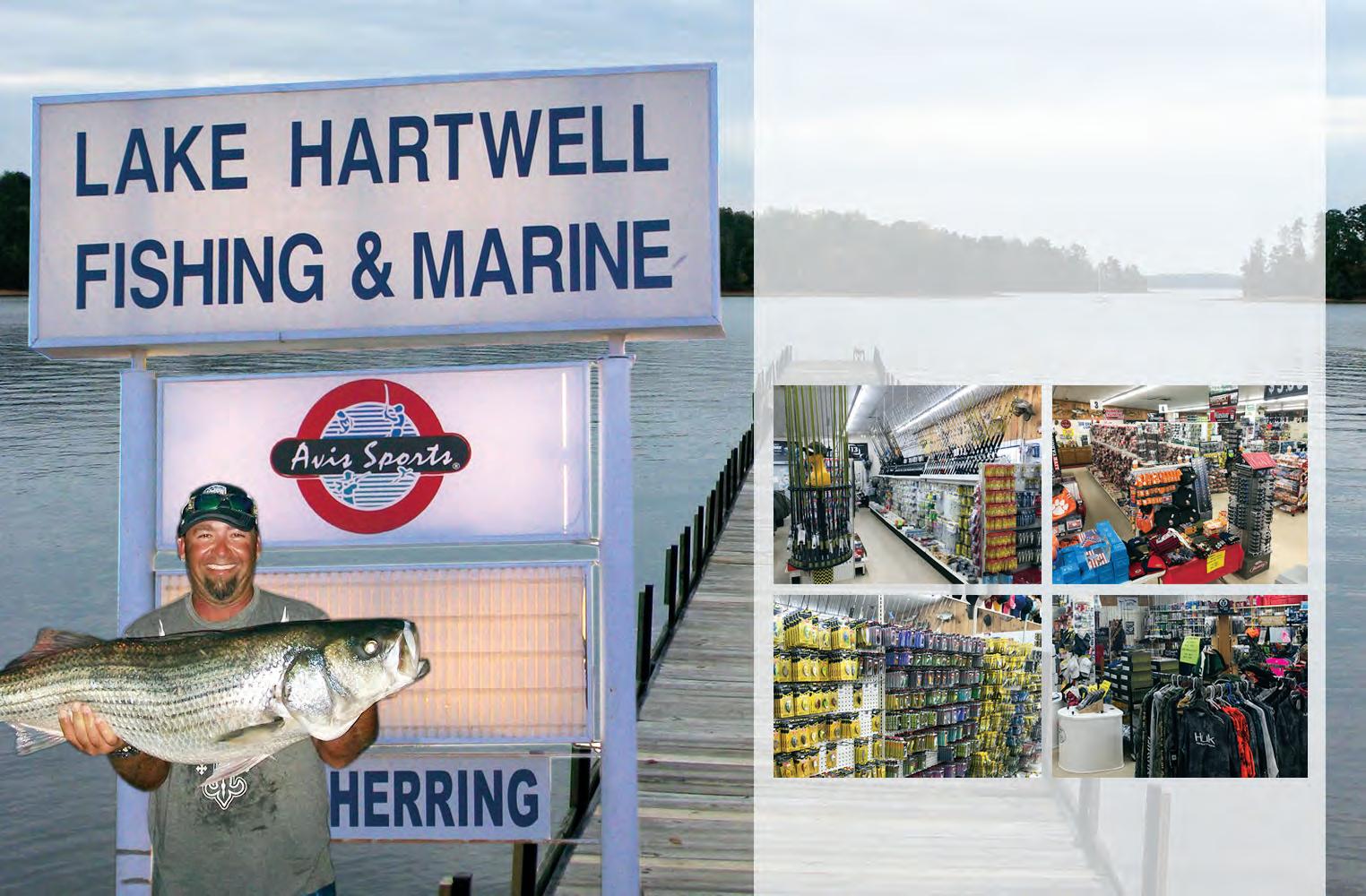

NEW in 2025! Join us in Damascus, Virginia for two new trout fishing tournaments hosted by the Town of Damascus, April 11-13 and September 12-14, 2025. Trout Days will be held on the portions of Laurel Creek and Beaverdam Creek within town limits and will be limited to 200 registered anglers each.
Registration is now open for Trout Days, September 12-14. Sign up soon to reserve your spot! Entry is $100 per person. Trout Days is a catch-andrelease tournament, single hook, artificial lures only. A current Virginia freshwater fishing license is required and state regulations apply. A stocking is scheduled prior to the event and 200 of the stocked trout will be tagged. The fishing tournament is open from 7am Saturday to 12pm Sunday.

on Saturday evening.
All Trout Days proceeds go toward supporting the Town of Damascus in long-term recovery efforts from the impacts of Hurricane Helene in September 2024.
Awards will be determined by a trout tag lottery on Sunday after the tournament. Each trout tag collected equals one entry; the more tagged trout you catch, the more chances to win! Prizes include cash awards of up to $1,000 each, plus a mix of gear, guided trips, and other sponsored items. Also included is a separate raffle for all participants
A fishing destination in its own right, Damascus, Virginia sits at the confluence of Whitetop Laurel, Tennessee Laurel, and Beaverdam Creeks. These streams form Laurel Creek for a short distance and then join the South Fork of the Holston River, just outside of town limits, and flow into South Holston Lake a few miles downstream. Fishing options around Damascus cover a wide range, from roadside to remote. Just upstream of Damascus lies one of Virginia’s greatest wild trout streams, Whitetop Laurel Creek.
For more information visit www.visitdamascus.org/trout-days. html


Grayson County abounds with creeks, lakes, and rivers making it the perfect place for easy access to fishing. One of the world’s oldest rivers and the few which flows north, New River meanders 46 miles through Grayson County with seven public boat landings spaced throughout. Its warm current allows anglers to catch the smallmouth bass of a lifetime, as well as many other fish from walleye to bass and everything in between. Many miles of creek run throughout Grayson County as well.
Big Wilson Creek is known to be one of the best local fishing spots in Virginia. Its deep pools and huge boulders make great hiding places for rainbow and brook trout. March is the best month for fly-fishing in this beautiful stretch of waterway. Foxwood Farm in Elk Creek stocks over a mile of the beautiful Elk Creek with rainbow trout ranging from two to six pounds. They offer guided and semi guided fishing trips on their property and other parts of the Elk Creek.
Running parallel to the New River Trail is Chestnut Creek which is stocked with trout and an excellent fishing locale in a lovely state park environment.
Grayson’s only lake, Hale Lake, is in the Comer’s Rock community in northern Grayson County. It is a small lake with an approximate one half mile loop circling it. This lake is a good place to take children for early fishing experiences as they most likely will catch something.
All of Grayson’s waters are crystal clear and clean making it one of the best fishing destinations in Virginia. Grayson offers peaceful fishing experiences with some of the most beautiful scenery to be found. Nature lovers will enjoy the opportunity to birdwatch and
observe other wild life and plant species as they fish. People travel from all over for our fishing experience.
Fish you’ll find here: Bluegill, Brown Trout, Catfish, Crappie, Largemouth Bass, Musky, Rainbow Trout, Redbreast Sunfish, Rock Bass, Smallmouth Bass, Spotted Bass, Striped Bass, Walleye, White Bass, and Yellow Perch.

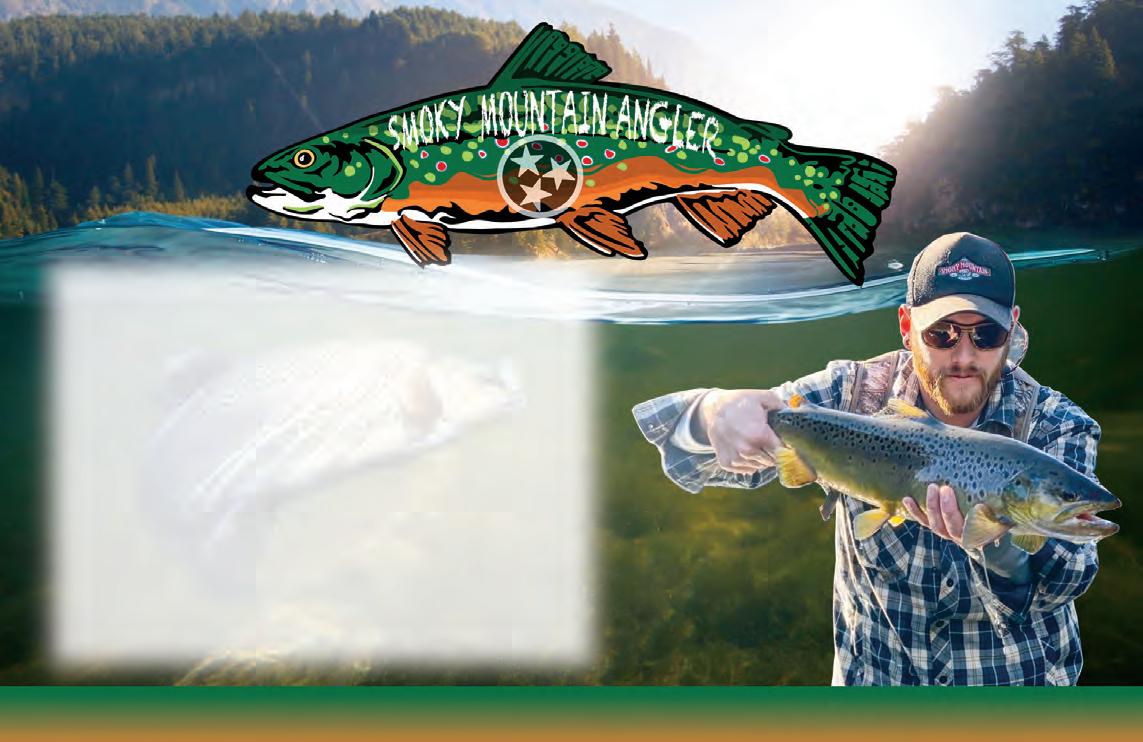

Provided by Captain Jim Durham, owner StriperFun Guide Service, Tennessee and Kentucky Walleye, Bass, Crappie and Muskie Charters, Superbaittanks.com, Captain Jim Marine Electronics and much more…… DATE OF REPORT: May 2025
Greetings to my readers! I hope that the world finds you and your family doing well!
The early summer crappie fishing on Dale Hollow Lake produces fantastic big stringers of nice slab crappie! These trips run June and July. We longline small crank baits catching massive slabs! Our clients always have a great time on Dale Hollow! Look for large schools of bait.
Laurel Lake, located west of Corbin, Kentucky, is one of the top walleye lakes in America! Our Kentucky Walleye Charter guide Fred Hoskins has several decades of fishing experience for walleye on Laurel Lake. We offer both day and night trips. The fishing is phenomenal! We fish live bait as well as troll and cast Captain Jim “Walleye Magic” lures concentrating on where creek channels the river channel.
The striper/hybrid fishing on Cherokee Lake and the striper fishing on Lake Cumberland is very popular with our clients. In April we troll live bait on planer boards 10 to 30 feet deep and also downline on suspended schools of fish, concentrating on main creek channel points. The fishing is great! With multiple full time guides on each waterway, StriperFun offers
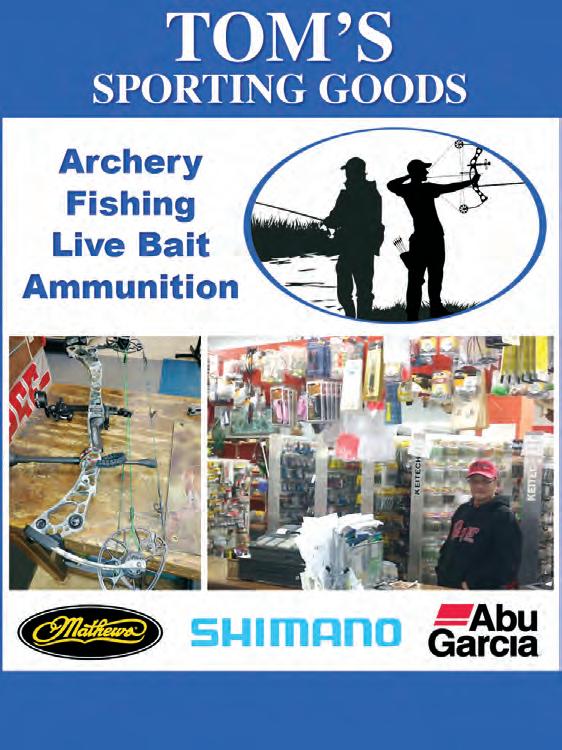

day trips on Cherokee Lake and Lake Cumberland year-round (weather permitting).
It is great to be alive and be a “free” American! I look forward to seeing all of you this year on the water. Always remember to stop and shake the hand of a person in uniform or wearing garb that shows they are a veteran!
Until next time, blue skies and tight lines!
With full State licensing and insurance, all Captain Jim’s Guide Service guides (17 guides on 18 waterways fishing 9 different species of fish) can take you on a safe, fun and unforgettable fishing adventure! Check out all of our fishing services as well as our exclusive “online” store at www. striperfun.com or call 931-403-2501 to make reservations today.
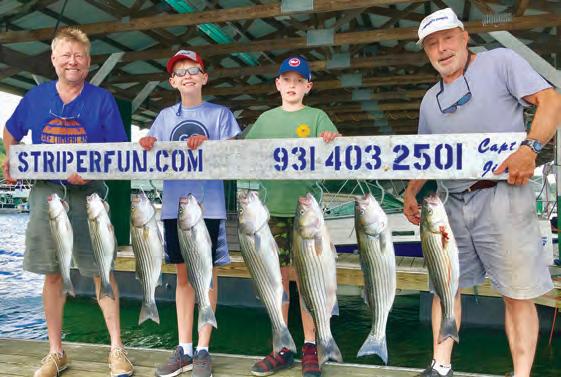
With full State licensing and insurance, all Captain Jim’s Guide Service guides can take you on a safe, fun and unforgettable fishing adventure! Check out all of our fishing services as well as our exclusive “online” store at www.striperfun.com or call 931-403-2501 to make reservations today.



By Matt Xenos and Perry Hensley

Well… the tournament could be summarized with one word: “WIND!”
Douglas fished tough today for a lot of anglers with the high sustained winds and even higher gusts. We had 13 boats participate in the event and brave the weather. The fish were found mostly in open water by our anglers and were caught on a variety of baits. The colors that seemed to be mentioned the most were silver and chartreuse and white and chartreuse.
The winning team for the day was Joel Nash and Skeeter Hayes with a bag of 12.31 lbs. Second place with a bag of 11.16 Lbs was Matt Xenos. Third place with a bag of 11.03 Lbs was Scott Bunch and Neal Alvis. Awesome bags of fish gentlemen!
Speaking of awesome fish, Perry Hensley and JD Dyer weighed in a big fish weighing 2.56 Lbs!! That fish secured them the Sniper Marine LLC big fish pot and they also took home the ACC Crappie Stix roll the dice rods. Good haul for those two.
Winning the Litewire Hooks box of jig heads was the team of Toby Cameron and Jacob Cameron.
Ryan and Ty Coffelt won the Knife Shop gift certificate.
Thank you to all the anglers who participated and congrats to everyone. Our next event will be the Classic on Ft Loudon. Hard to believe it’s already the end of the season.






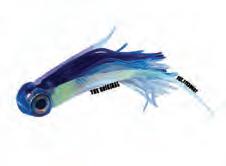


A!er breaking shermen’s hearts by releasing trophy grouper throughout the closed season, May is nally here, opening grouper season for anglers on the Atlantic Coast. I, for one, am thrilled to be able to add these tasty critters to the icebox yet again.
e red grouper is one of the most popular bottom sh found along the southeastern coast of the United States, particularly in the Gulf of Mexico and the Atlantic Ocean. It’s rm, white esh and rich avor make it a favorite for the majority of o%shore anglers. Easily recognizable by its reddish-brown coloration, the red grouper features scattered white blotches and a stocky body that suits its role as an ambush predator in rocky reef environments. Pulling one up from the depts that they exist in is the price you’ll pay to put this meat on your table because they’re also able to aggressively resist your will and challenge your strength. I like targeting them using live or cut bait. Once hooked, they tend to dive back into structure, which makes landing them a rewardingly brutal experience.
those who regularly bottom sh the overabundance seems to be more of a problem than the reduced stock assessments that NOAA has promoted.


e National Oceanic and Atmospheric Administration (NOAA), has attempted to monitor stock assessments of red grouper, although many cite awed data in their forecasts. e catch limits and season closures that they’ve implemented have substantially reduced the angling communities’ opportunities to catch this highly sought a!er sh. For

I could be wrong, but it seems as if NOAA has become antirecreation-fishing oriented. eir policies and choice of data has created a distrust among many (most all) anglers these days. While ASA and numerous other angler organization have attempted to impact NOAA’s trend toward “Don’t Catch,” much remains to be done to correct the adversarial relationship between the American angler and this once highly respected organization. My small home town once had an animal control o cer that hated and abused stray dogs. Once the community brought this to the attention of local government o ce the problem got solved relatively quickly. ey red him. No more problem. Has it come time to re the management team of NOAA?
Disclaimer: e views and opinions expressed in this column are those of the writer and do not necessarily re ect the views or positions of Coastal Angler Magazine or any entities they represent.


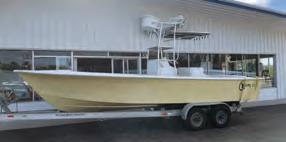



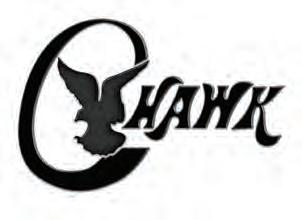




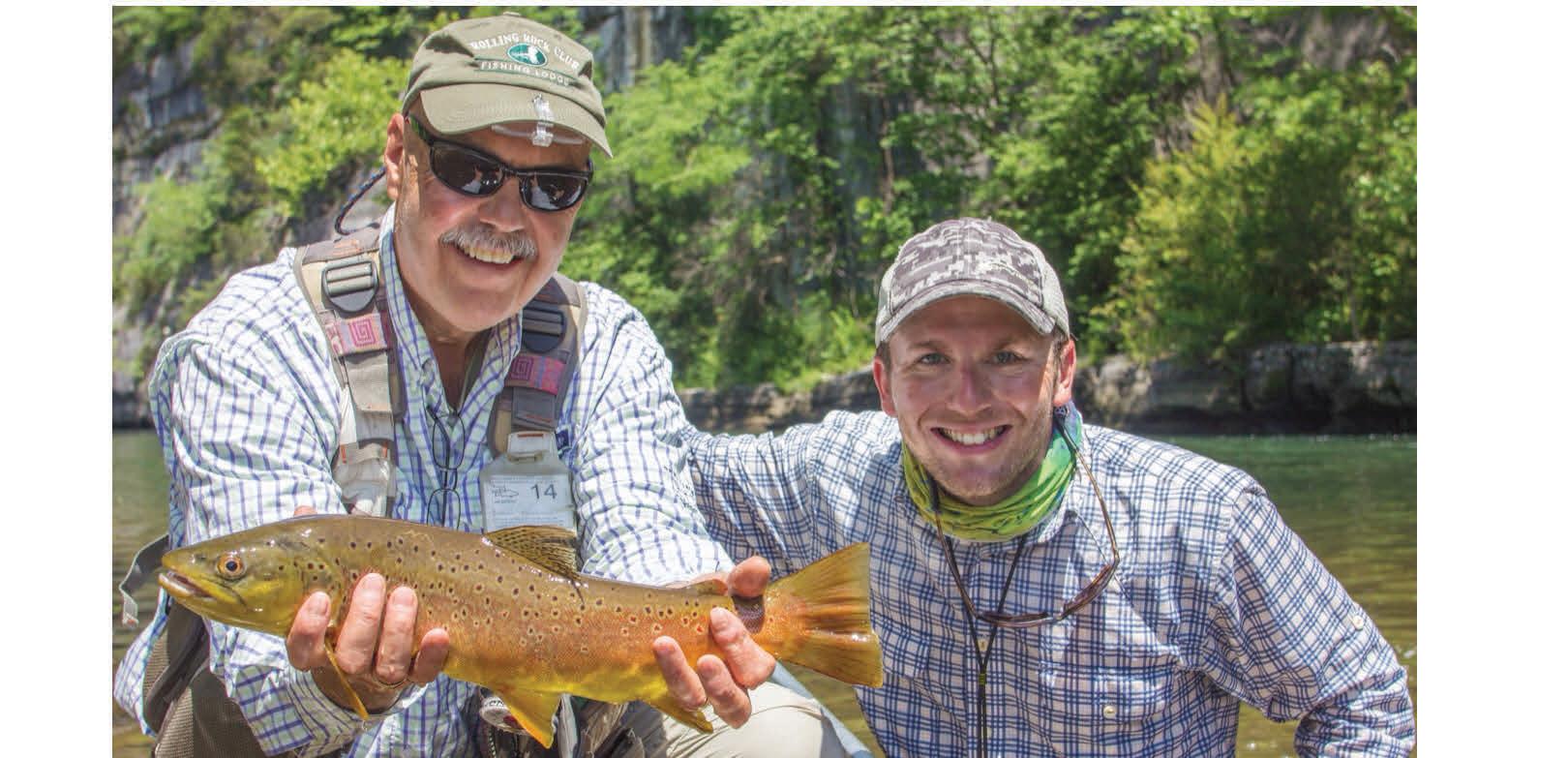



By Paul MacInnis
Catching channel cat sh can be a lot of fun and super rewarding—these guys ght hard! And the nice thing about cat shing is you don’t need fancy baits or tackle. If you want to target bullheads and smaller pan-sized cat sh you can use baits you gather right out of the river like grass shrimp and mussels. You can also use earth worms or small chunks of hotdog. Fish these baits on a 1/0 Aberdeen hook and add just enough split shot to your line to hold bottom.
But I prefer to target bigger channel cat sh, the bigger the better, using peeled shrimp for bait. You don’t need fresh shrimp, a bag of frozen shrimp from your local bait shop works ne. I also like to use cut bait as it holds up well to the bait stealers. Cut mullet or chunks from just about any sh work.
I use a standard sh nder rig. Run the line through a one-quarter to one ounce egg sinker, choosing just enough weight to hold bottom. Tie the line to a swivel and add about one to two feet of twenty pound test mono lament to the other end of the swivel. To the end of this leader I tie a 4/0 Team Cat sh TC84Z circle hook.
Baitcasting gear used for bass shing and 2000 to 3000 sized spinning tackle works ne for channel cats. You can get by with inexpensive mono lament, but I prefer a good quality 10-pound test braid like Platypus Platinum Plus. Braid won’t bow out as much as mono lament due to wind or current so it gives you a straighter connection between rod tip and bait. is kind of tackle can get sporty if a 10-pound-plus cat sh takes your bait, but sporty is exactly what I am looking for!






Popular wisdom says you should sh your baits in the deeper bends and holes. I shed that way for years and caught plenty of one to ve pound cat sh, but bigger sh eluded me. Many rivers (even lakes) are loaded with little coves and basins. I’ve learned if there is three feet or more of water in these basins there’s a decent chance there will be some nice cat sh there. I’ll park my kayak at the edge of the opening and cast a bait towards the center of the mouth of the cove, trying to place my bait in the slack water but close, within 10 feet or so, of the current. If I am feeling ambitious I’ll toss a second bait towards the back of the cove. Most of the time the biggest cat sh go for the bait close to the cove mouth...but that isn’t always the case. I like to let the circle hook do all the work so I’ll leave the rods in the rod holders until a sh puts a good bend in the rod and maybe even takes drag. Keep your ears open for loud splashes as channel cats will o!en thrash at the surface right a!er feeling the hook. Also watch your line. Cat sh don’t always take the bait going away from you. If your line goes slack or your bait changes position reel up tight and see if there is a sh on the line. Finally, if you start catching a lot of bow n you might want to move elsewhere (unless you like catching bow n) because I nd cat sh and bow n seldom share the same locations.
Channel cat sh can be aggressive predators and many a bass angler has been surprised when a big cat grabs their bass lure. Most of the time I wouldn’t advise tossing lures as an e cient way of targeting cat sh, but some years there is an exception that happens in spring into early summer. Winter and spring are typically dry season and water levels drop. Fish congregate in what deeper holes are le! and become aggressive due to high competition for food. is is one time when you can readily catch cat sh on lures and even ies. I like small plastic worms and other so! plastic baits bumped slowly along the bottom. Keep in mind cat sh are primarily scent feeders so dousing your lure with a decent sh scent helps.
During low water you’ll occasionally run across a real treat, a sandy bottom pool where you can spot cat sh and sight cast to them. I highly recommend a quality pair of polarized sunglasses with an amber tint and mirror coating to help you tell cat sh from gar and tilapia.
I suggest you give shing for channel cats a try, especially on those days when “game sh” don’t cooperate. Be patient, stay persistent, and enjoy the process!
When you rst drop your boat in the water, o!entimes it can be extremely overwhelming on where to sh and what to throw. One bait I have found in particular seems to catch bass at every lake I go to. is bait is a bladed jig, better known as a chatterbait. e bladed jig is a extremely versatile bait, meaning you can throw it around so many di%erent types of cover and sh it at many varying depths. It allows you to cover a vast amount of water and locate bass that would usually take days to nd with other baits.
As you approach a new lake or even one you have been to a thousand times, it’s always a good idea to throw a con dence bait that you know will get bites. e chatter-bait is mine. I’ve found that no matter the cover, grass, trees, docks, riprap, etc., it gets bit. With the blade on the front vibrating so erratically, it allows this bait to come through cover extremely well and creates a reaction strike no other bait can.
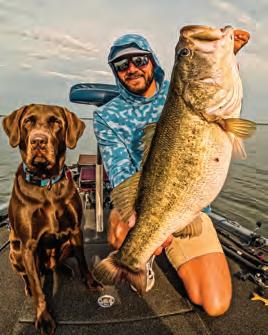
their home. Depending on the time of year and what kind of bait the bass are feeding on where you are shing, there is a color made to match the hatch. If shad is the prevalent forage, I like to stick to a white or a bait sh color like a pearl and silver with a silver colored blade. If it’s bluegill, you can get by with a green pumpkin or anything with some yellow and orange mixed in with a darker blade color. Sometimes water color can play a factor in color choice as well. If the water is very dirty, you will have to use a color that will stick out so that they can see it pass by. Something like a white and chartreuse with a white blade (for bait sh imitation) or even a bright orange with a black blade (for craw sh imitation) can do the trick.
TYLER WOOLCOTT

Buying a bladed jig and tying it directly on your rod usually isn’t too e%ective without putting a trailer on the back of it. I like to try and match the color of the trailer to the color of the skirt on your chatterbait of choice to get the most natural look for the sh. e type of trailer can be a bit more complicated. I use either a swimbait style trailer with a boot tail or a apping style trailer like a craw pattern. e boot tail stands out when sh are very aggressive and aren’t scared of the more aggressive action the boot tail causes behind the bait. e appy trailer is better for highly-pressured sh that want a little more of a subtle approach who might not like the amount of action a swimbait trailer has.
A chatterbait is a very dominant bait all across the country and I rely on this bait at all times of the year to help me put sh in the boat. Next time you hit the lake, give the chatter-baitt a try and cover some water!
Let’s talk about matching the chatterbait to the bait forage. By matching the color of the bladed jig to the forage in the lake, a bass can’t resist it as a nice snack when you reel it through
Sizes and weights of your bladed jig are extremely important. With sizes ranging from 1/4 oz. all the way to 1.25 oz., the depth you are shing will decide what you tie on. I typically start with a 3/8 oz. or a 1/2 oz. which will allow you to cover water depths from 1 to 10 feet depending on your retrieve. If I nd some deeper cover that i want to get down to and sh, I will go a little heavier to a 3/4 oz.

Whether you’re fishing in a kayak, canoe, or small boat, the ePropulsion eLite 500W redefines your on-water experience with innovative features and commitment to sustainability. Designed to be the most compact and lightweight electric outboard in its class, it is an easy-to-use alternative to small internal combustion engines for enthusiasts worldwide. Max 5.6 miles at half throttle and 3.5 miles at full throttle.
BLADED JIG GEAR: When throwing a bladed jig its important to have the correct gear. I use a 13 Fishing Myth Rod 7’5 MH-mod paired with a 13 Fishing Concept A 7:5:1 reel. I spool this up with 17 lb. Su x Advance Fluorocarbon line making this the perfect combo for the job.
Tyler Woolcott is a professional tournament angler and guide. Check out his website at www.tylerwoolcott shing.com.






— Gene H.

Switzerland is synonymous with expensive, big-name luxury watches like Rolex®, Piaget® and Patek Philippe® that sell for thousands, but the Stauer Swiss Tactical Watch delivers Swiss precision for a fraction of the cost. Inspired by military timepieces like the American A-11, it combines rugged performance, simplicity, and legendary craftsmanship — built for action, not display cases.
Precision Takes Time
Swiss excellence demands patience. Each Stauer Swiss Tactical takes nearly nine months to complete, and this is a limited edition of 4,900. Crafted by master watchmakers, some of whom have worked with the other prestigious brands, this is your chance to own a rare, precision-engineered tactical watch without the inflated luxury price tag.
Why Pay for a Name?
Big brands charge more for status. Stauer delivers the same quality and precision with high-contrast markers for instant readability, a shock-resistant case to withstand hard knocks and Swiss-made movement for impeccable timing.
Limited Offer – Act Now
Don’t miss this rare combination of Swiss craftsmanship and unbeatable value. Only 4,900 available — once they’re gone, they’re gone.
Why pay more when you can own precision, heritage, and adventure for less? Order now — time is running out.
Watch Speci cations:
• Made in Switzerland with precision Swiss Ronda 515 movement. Stainless steel caseback. Brown leather band
• 44 mm diameter case. Date window at 3 o’clock
• Water-resistant to 3 ATM. Fits wrists up to 8 ¼”
Stauer Swiss Tactical Watch
$399 $59* + S & P Save $340
*Special price only for
APort Arthur, TX angler and his friends recently achieved an extraordinary feat— reeling in an enormous 884-pound blue n tuna.
On April 10, David Esslinger and his friends were shing in the Gulf when the massive sh struck his line with incredible force. He had no idea he was about to embark on the most intense battle of his shing career. ankfully, Esslinger had an eager crew by his side, ready to assist in landing this remarkable sh.
“Let me break down the day and the events for you. First o%, for those who have never landed a sh the size of a car, this is no small feat. No one accomplishes this alone,” Esslinger posted on Facebook.
e group set out early Friday morning. By 9 a.m., a!er a couple of hours of shing, they started noticing signs of a school of tuna breaking the surface of the calm waters. Suddenly, the right rigger snapped down with a forceful bite, signaling the start of Esslinger’s showdown against his monstrous tuna.
Esslinger recalls, “Big tuna started breaking the surface and our team’s spirits began to li! at’s when it happened—the right rigger came down hard. e sh ran about ten seconds and spit the 12/0 mustad hook and the bait. As my heart sank,
I came up on the drag and gave her 10 cranks. As soon as I engaged the clicker again the giant sh piled on again. at’s when the rst 3/4 spool run at 35 pounds of drag started.”
Realizing what was at stake, his team quickly got into position for the ensuing battle, clearing lines and the deck.
“I had to crank it up to 45 pounds of drag on the Tiagra to slow her down. She responded with a rush to the surface. Carson was at the helm with Brad, TC, Je%, and Colby, coordinating everything e ciently from cockpit to helm. We managed to get the sh up to the surface in just over an hour,” stated Esslinger.
A!er an exhausting ve-hour battle of strength and endurance, Esslinger and his crew nally brought the massive blue n alongside the boat. With shaking body and inoperable hands, Esslinger made his way to the side of the boat and screamed with utter shock, “What a giant blue n! We did it!”
is impressive catch is seen as a trophy sh among anglers, celebrated for its enormous size and high-quality meat. And it was indeed enormous. Weighing in at 884 pounds, this blue n tuna has set a new state record for the largest tuna caught in Texas, surpassing the previous record of 876 pounds established by Troy Lancaster in 2021.




By CAM Sta














You want AI Routing! Let TZ MAPS with AI Routing make route planning a snap. Don’t take our word for it. Scan here to see for yourself how easy it is!